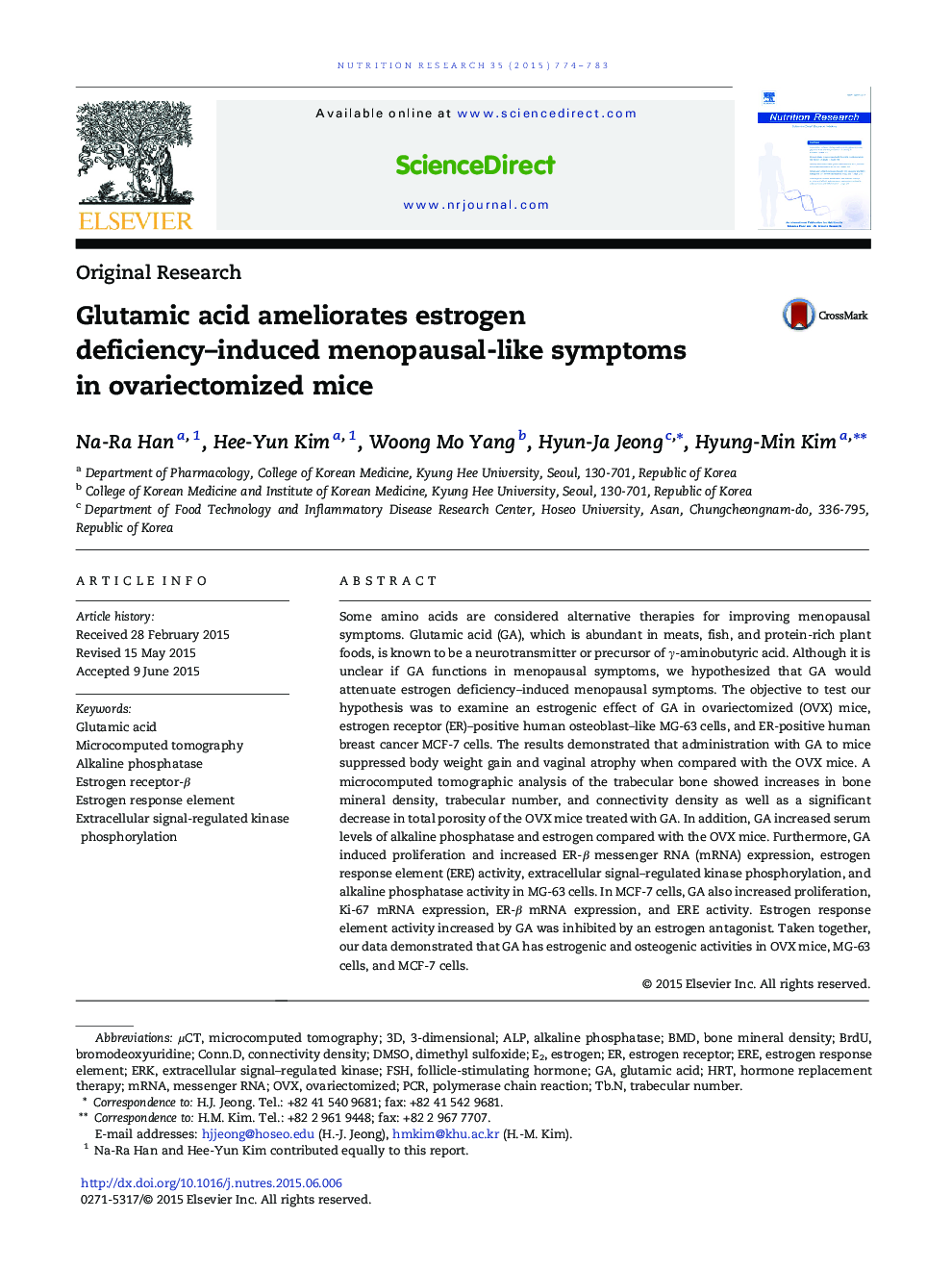| Article ID | Journal | Published Year | Pages | File Type |
|---|---|---|---|---|
| 5904420 | Nutrition Research | 2015 | 10 Pages |
Some amino acids are considered alternative therapies for improving menopausal symptoms. Glutamic acid (GA), which is abundant in meats, fish, and protein-rich plant foods, is known to be a neurotransmitter or precursor of γ-aminobutyric acid. Although it is unclear if GA functions in menopausal symptoms, we hypothesized that GA would attenuate estrogen deficiency-induced menopausal symptoms. The objective to test our hypothesis was to examine an estrogenic effect of GA in ovariectomized (OVX) mice, estrogen receptor (ER)-positive human osteoblast-like MG-63 cells, and ER-positive human breast cancer MCF-7 cells. The results demonstrated that administration with GA to mice suppressed body weight gain and vaginal atrophy when compared with the OVX mice. A microcomputed tomographic analysis of the trabecular bone showed increases in bone mineral density, trabecular number, and connectivity density as well as a significant decrease in total porosity of the OVX mice treated with GA. In addition, GA increased serum levels of alkaline phosphatase and estrogen compared with the OVX mice. Furthermore, GA induced proliferation and increased ER-β messenger RNA (mRNA) expression, estrogen response element (ERE) activity, extracellular signal-regulated kinase phosphorylation, and alkaline phosphatase activity in MG-63 cells. In MCF-7 cells, GA also increased proliferation, Ki-67 mRNA expression, ER-β mRNA expression, and ERE activity. Estrogen response element activity increased by GA was inhibited by an estrogen antagonist. Taken together, our data demonstrated that GA has estrogenic and osteogenic activities in OVX mice, MG-63 cells, and MCF-7 cells.
